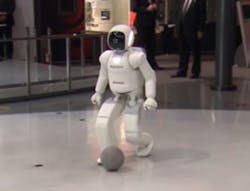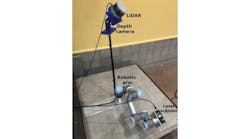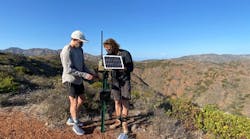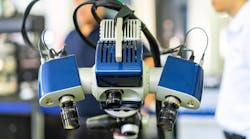During the first ever Collaborative Robots Workshop held during the AIA Vision Show in Boston, two experts in the field of robots spoke about the importance of human-robot acceptance. This idea, as explained by both Chris Jones, Director of Strategic Technology at iRobot Corporation as well as Craig Schlenoff, Cognition and Collaboration Group Leader for the National Institute of Standards and Technology, refers to the idea of getting humans who will be working alongside robots used to the idea of it.
It was one of a number of challenges laid out by both Jones and Schlenoff in their respective presentations. If this, along with a number of other challenges specifically involving the robot itself, are able to be overcome, then entire new robot applications may soon develop across a number of industries, suggested Jones.
The concept of getting people “used to” the idea and reality of working alongside robots is one that I find particularly interesting. It won’t, however, apply to folks who are working alongside the robots, but also to people who encounter robots in their everyday lives. US President Barack Obama’s recent visit to Japan’s National Museum of Emerging Science and Innovation, or Mirikan, and encountering the Honda ASIMO robot is a prime example.
Obama, who visited the museum in order to get a glimpse of the Japan’s latest technology and to renew a 10-year scientific collaboration between the two countries, got to see up close and personal some of the capabilities of the ASIMO, which was dressed in an astronaut suit and about the height of a 10-year old child. The robot was introduced in 2000 and was designed to be a multi-functional mobile assistant.
While Obama did say the robot was “amazing,” he also found it a bit jarring.
"I have to say that the robots were a little scary, they were too lifelike," he said.
While many people out there probably already work alongside a number of automation robots, perhaps the idea of a robot that looks like a person, speaks, and can “see” with cameras as eyes comes off as a bit intrusive or all too much Terminator 2-like. Whatever the case may be, I would imagine that if and when robots such as ASIMO start to become more and more common, people will become more used to them in everyday life.






